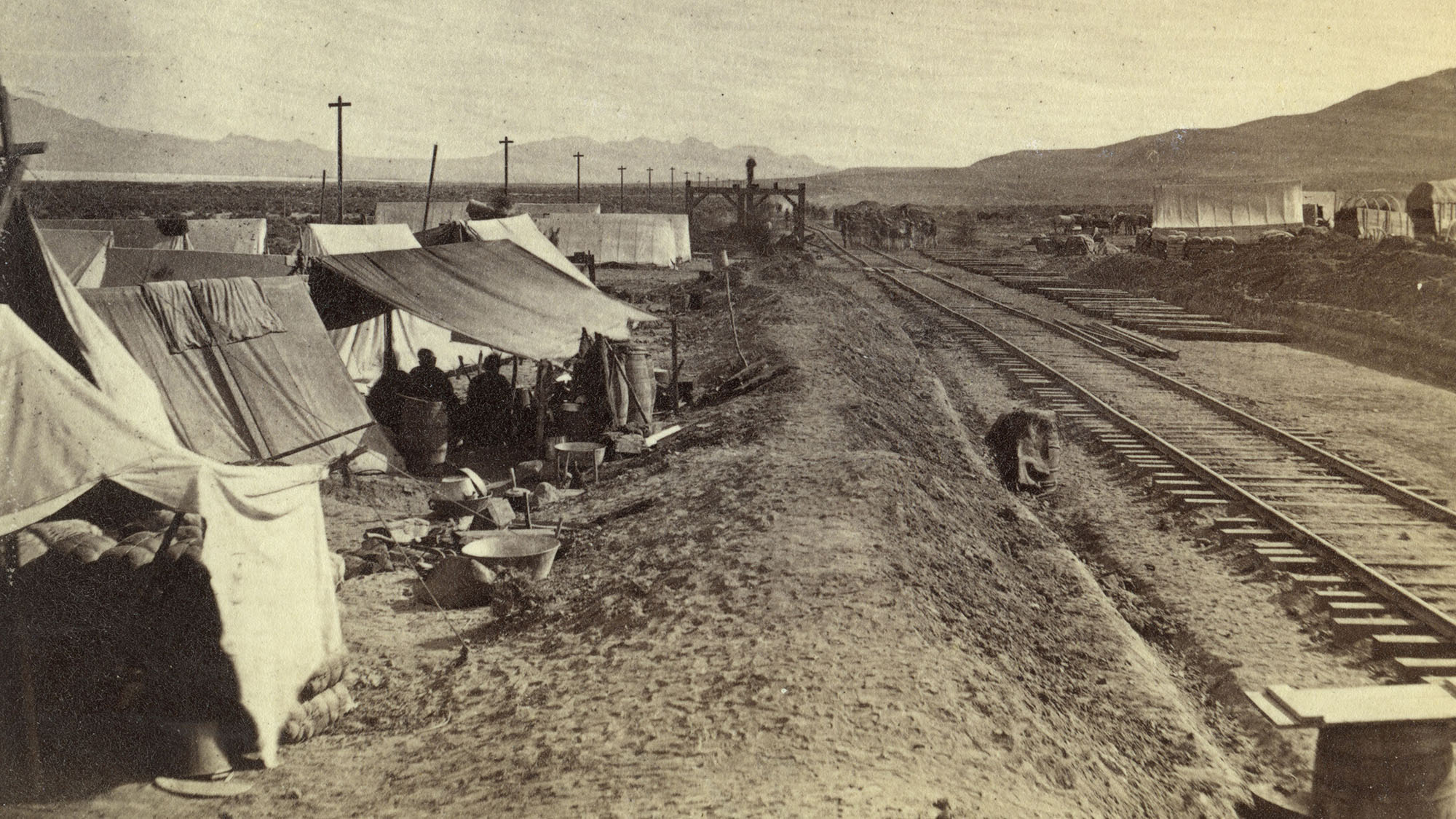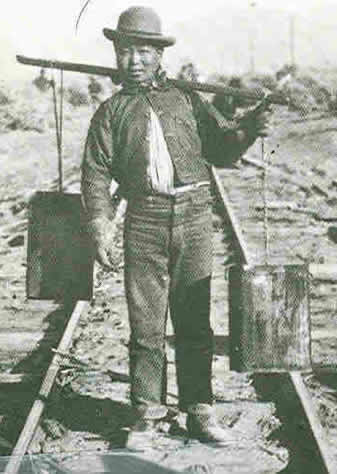Notes
Lesson 3: Daily Life and Working Conditions
Do Now Activity
View photographs of Chinese labor camps and working sites.What thoughts do you have? How do you feel? Think about what challenges the workers faced.

From the Library of Congress.
Learning Objective
Explore the daily life and working conditions of Chinese laborers on the railroad.
Daily Life
Objective: Describe the living conditions in labor camps. Workers often lived in tents or rudimentary shacks, and they formed tight-knit communities.
The living conditions in labor camps for Chinese workers on the Transcontinental Railroad were extremely harsh and basic. Many workers lived in tents or makeshift shacks that offered little protection from the elements. These structures were often poorly constructed, leading to leaks during rain and little insulation against the cold. Crowded conditions were common, with several men often sharing a single tent or shack. Privacy was a luxury few could afford. Despite the harsh conditions, the workers managed to create a sense of community within the camps. They brought elements of their culture and traditions with them, setting up makeshift kitchens where they could cook meals that reminded them of home.
To cope with the isolation and harshness of their surroundings, the Chinese laborers relied heavily on each other for support. They formed tight-knit communities, helping one another with daily tasks and providing emotional support during difficult times. They engaged in cultural practices, such as playing traditional music, celebrating festivals, and practicing religious rituals. This sense of community was vital for their mental and emotional well-being, offering a sense of familiarity and comfort amidst the grueling and often dehumanizing conditions of the labor camps. The communal lifestyle also fostered a sense of solidarity and resilience, helping them endure the challenges they faced daily.

A group of Chinese immigrants standing together. From the Library of Congress.
Working Conditions
Objective: Explain the grueling nature of the work, including blasting through mountains, laying tracks, and working in harsh weather conditions.
In addition to the physical demands, the mental strain was considerable. The constant danger from explosives and unstable terrain meant that accidents were frequent and often fatal. The workers faced landslides, falls from heights, and collapsing tunnels, all of which posed severe risks. The work environment was also marked by racial discrimination and poor treatment from supervisors, who often showed little regard for the safety and well-being of the Chinese laborers. Despite these challenges, the workers demonstrated remarkable perseverance and resilience, driven by the promise of wages that could support their families back home and the hope of a better future.

Harsh work conditions with very few breaks, as depicted by the image above. From PBS.
Health and Safety
Objective: Discuss the risks involved, such as accidents from dynamite blasts, extreme temperatures, and inadequate medical care. Health and safety conditions for the Chinese workers on the Transcontinental Railroad were deplorable. The risks involved in their daily tasks were immense, with accidents from dynamite blasts being particularly common. These blasts often resulted in severe injuries or death, with little to no medical care available. The extreme temperatures posed additional health risks, with workers suffering from heat exhaustion in the summer and frostbite in the winter. The lack of proper medical facilities meant that even minor injuries could become life-threatening, as infections and untreated wounds were common.
In addition to physical injuries, the workers faced numerous other health hazards. The poor living conditions in the camps contributed to the spread of diseases, with inadequate sanitation and clean water leading to frequent outbreaks of illness. Respiratory problems were also common, exacerbated by the dust and debris from constant blasting and digging. Malnutrition was another issue, as the diet provided to the workers was often insufficient in both quantity and nutritional value. Despite these dire circumstances, the Chinese laborers showed incredible resilience, supporting each other through illness and injury and finding ways to maintain their physical and mental health in the face of overwhelming odds.

A worker carrying heavy items on his shoulders. From Library of Congress.
Activity
Day-in-the-Life Journal Entry: Write a journal entry from the perspective of a Chinese laborer, detailing a typical day’s work and the challenges faced.Make sure to include details and specifics you’ve learned!
Discussion: First, self-reflect. What are your key takeaways and what components of the lesson did you incorporate? Share your journal entry with one other person. What are their thoughts and takeaways? For homework, research and bring to class a primary source (e.g., diary entry, letter) from a Chinese laborer.
